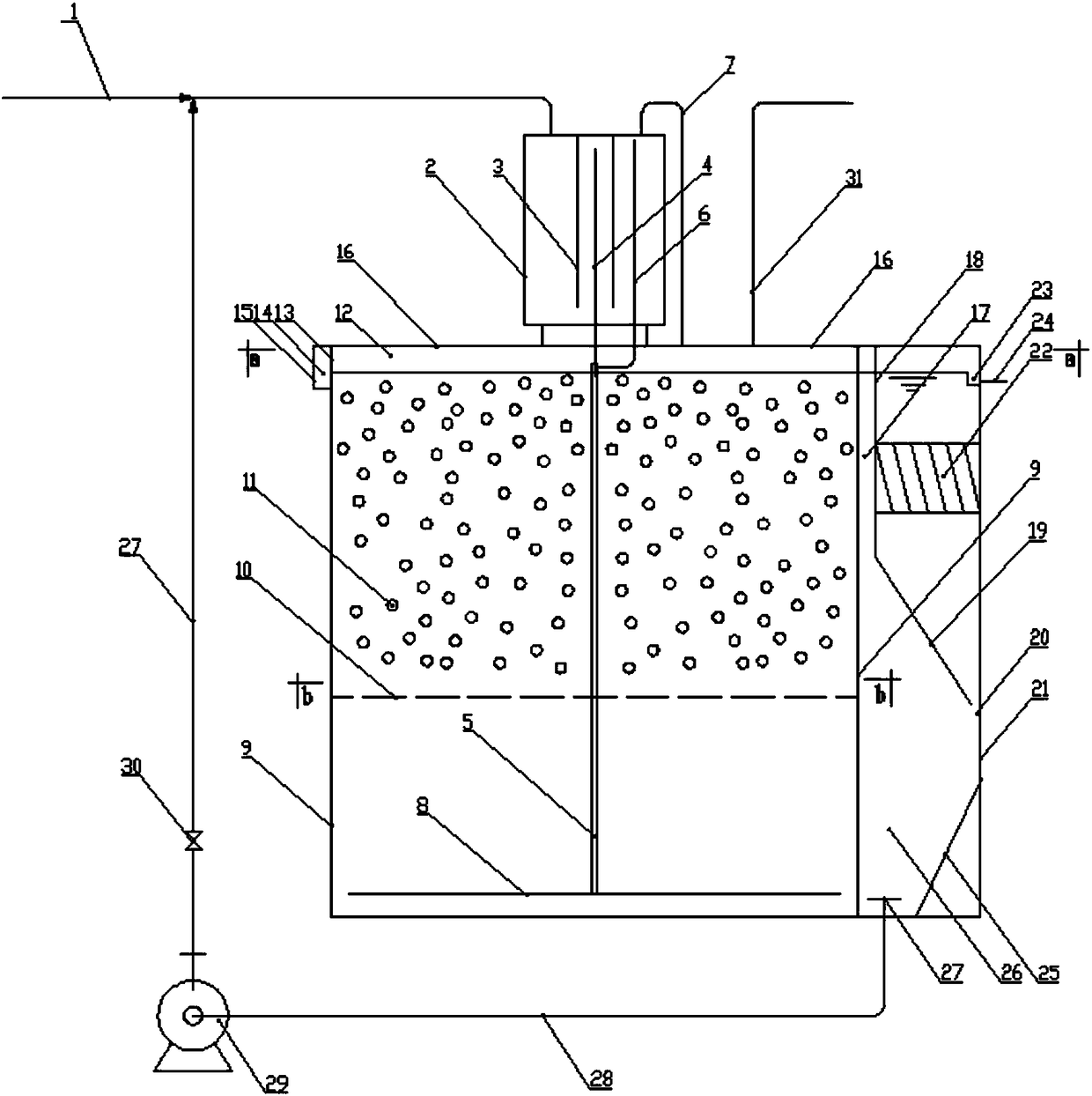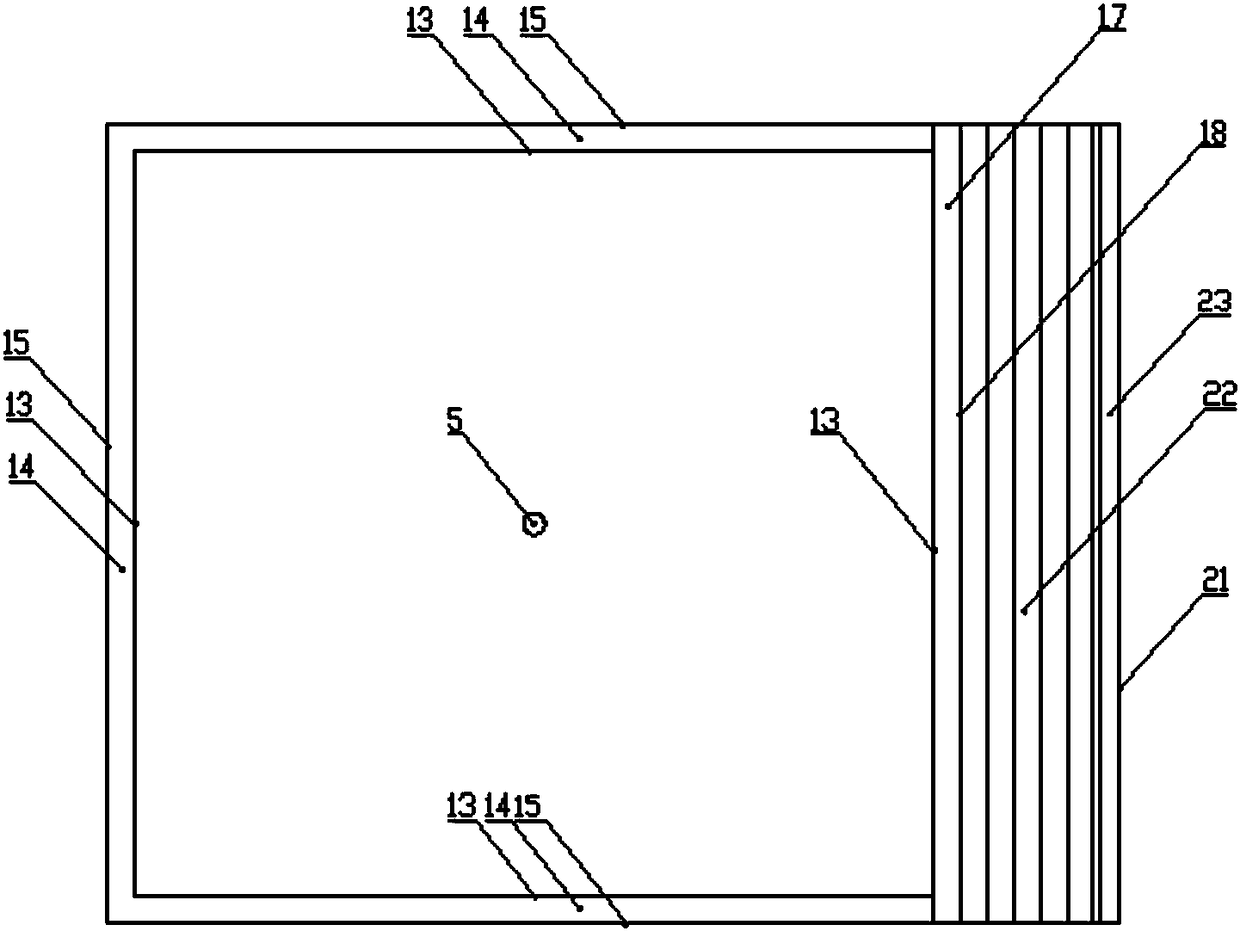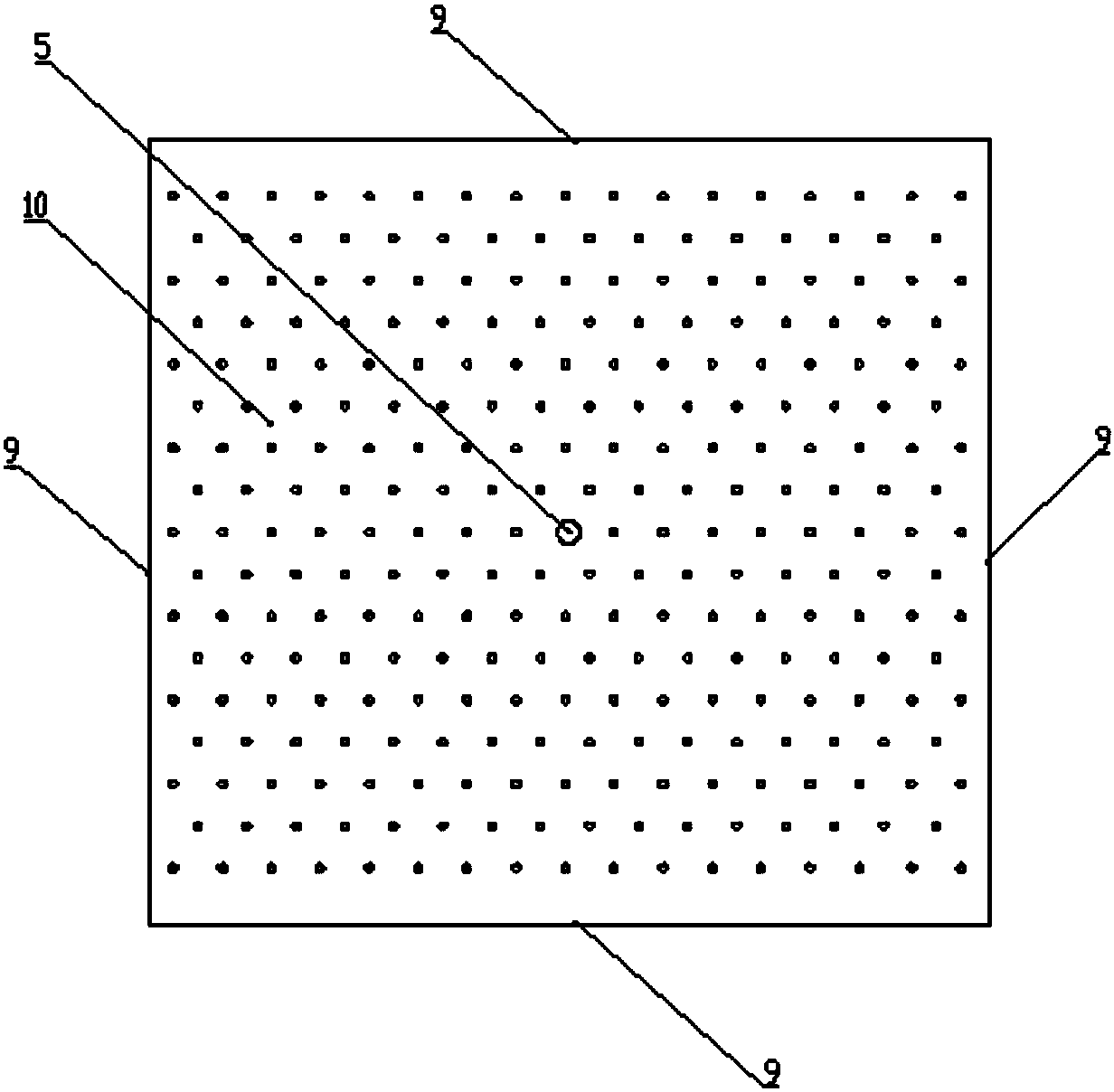However, the above methods also bring about the problem that the three-phase separation efficiency of
solid, liquid and gas is difficult to guarantee. Conventional three-phase separators have the advantages of simple structure and low cost when dealing with this problem, but they often have low solid-liquid separation efficiency. Inherent
disadvantage of easy sludge loss
[0005] Like EGSB and IC anaerobic reactors and UASB anaerobic reactors and other anaerobic biological treatment processes, good water distribution devices are required for influent water, and gas, liquid and solid three-phase separators are required for
effluent water, and EGSB, IC Anaerobic reactors have far higher requirements for gas, liquid and solid three-phase separators than UASB anaerobic reactors. Often due to the unreasonable design of the three-phase separators, a large amount of biological sludge is lost and it is difficult to form granular sludge. , the
processing effect is poor
In order to achieve the ideal separation effect of the three-phase separator, a large number of researchers have proposed many improvement measures, such as: adding a rotating blade to generate a downward flow at the bottom of the three-phase separator, which is conducive to the return of sludge; An
agitator is installed in the
oxygen reactor to promote the separation of air bubbles and granular sludge; a baffle is set at the outlet weir to retain granular sludge, etc., but these measures increase the
energy consumption and design complexity of EGSB and IC anaerobic reactors However, it is still unable to effectively solve the contradiction between sufficient mixing and sludge loss, which limits the popularization and application of this efficient anaerobic reactor technology, and the popularization and application rate is not high.
[0006] The main reason is that the technology is still not perfect
Its deficiencies are as follows: (1) The
water flow state is an upflow in a uniform state. Although the upflow rate is higher than other anaerobic reactors, the power to promote the relative movement between sludge and
sewage is insufficient, so the sludge particles There is still a lot of room for improvement in the adsorption and degradation rates of organic pollutants
In order to ensure a high rising flow rate inside the anaerobic reactor, EGSB uses external
water circulation, which not only increases the
energy consumption of the anaerobic reactor, but also increases the surface
hydraulic load of the sludge settlement and separation zone.
(2) Due to the large height-to-
diameter ratio, the area of the
sedimentation separation area is limited, and the
biogas bubbles attached to the granular sludge affect the solid-liquid separation effect of the three-phase separator, and the surface
hydraulic load is too large, resulting in muddy water. Produced, resulting in a large amount of sludge loss, it is difficult to form high-concentration and high-quality granular sludge, which affects the
treatment effectDuring the operation of the EGSB anaerobic reactor to drive the sludge expansion, it is necessary to increase the
upflow velocity of the sludge mixture, while preventing the loss of sludge, it is also required that the
upflow velocity of the sludge mixture should not be too fast, so the difference between the two It is difficult to resolve the contradiction between
(3) The start-up time of EGSB and IC anaerobic reactors is long, the growth of
anaerobic microorganisms is slow, and granular sludge is difficult to form, or the fine granular sludge formed in the initial cultivation is not easy in EGSB and IC anaerobic reactors. Retained; therefore, the expanded bed reaction of granular sludge cannot be formed quickly, and a large amount of granular sludge is often inoculated, which increases the
investment cost of anaerobic reactor startup
(4) The structure of the three-phase separator used to separate gas, liquid and sludge is complicated, the process installation level is very high, and the installation and construction are difficult, etc.
However, in actual operation, the UBF reactor still has the following deficiencies: (1) The separation effect of gas, liquid and sludge cannot reach the effect of the UASB or EGSB three-phase separator: the part of the sludge bed of the UBF anaerobic reactor contains
biogas sewage The mud, colliding with the packing during the rising process, takes off the air bubbles, the sludge re-settled back to the sludge bed, the waste water and biogas pass through the packing layer, the biogas is collected, and the waste water flows out from the outlet weir
However, due to the rising process of the gas-containing sludge, accompanied by the
buoyancy of the biogas, the flow rate is very fast, and it impacts the fixed packing layer upwards, so that the sludge can easily pass through the packing layer; when the sludge is degassed on the water surface, due to anaerobic
pollution The wet
specific gravity of the mud is only about 1.06, and the sinking speed is relatively slow, so it is impossible to return to the sludge bed area through the packing layer
The filling area actually becomes a "
check valve" for sludge, which leads to the continuous loss of sludge in the anaerobic reactor, making it difficult to maintain stable operation of the
system(2) Generally, when the
volume load is small, the UBF anaerobic reactor can still maintain operation when the gas load of the biogas is not high due to the low biogas output; but when it is greater than a certain
volume load, when the gas load of the biogas increases, the content of The floating speed of air sludge is very fast, and the sludge starts to lose continuously. When the
volume load is higher, the operation cannot be stable.
(3) The film-hanging effect of the filler is limited: it is generally believed that the filler can increase the concentration of microorganisms through the film-hanging to achieve the removal of
organic matterIn summary, the UBF anaerobic reactor cannot replace the UASB or EGSB anaerobic reactor very well, and the effect of the UBF anaerobic reactor is far from that of the UASB or EGSB anaerobic reactor.
[0008] In view of the fact that there is still a big gap between my country's research on anaerobic reactors and the world's advanced level, although there are currently application examples of EGSB anaerobic reactors in the treatment of high-concentration organic
wastewater, due to the application of EGSB anaerobic reactors in the water
distribution system and three-phase The relatively backward design of the separator cannot achieve satisfactory results
 Login to View More
Login to View More  Login to View More
Login to View More 


